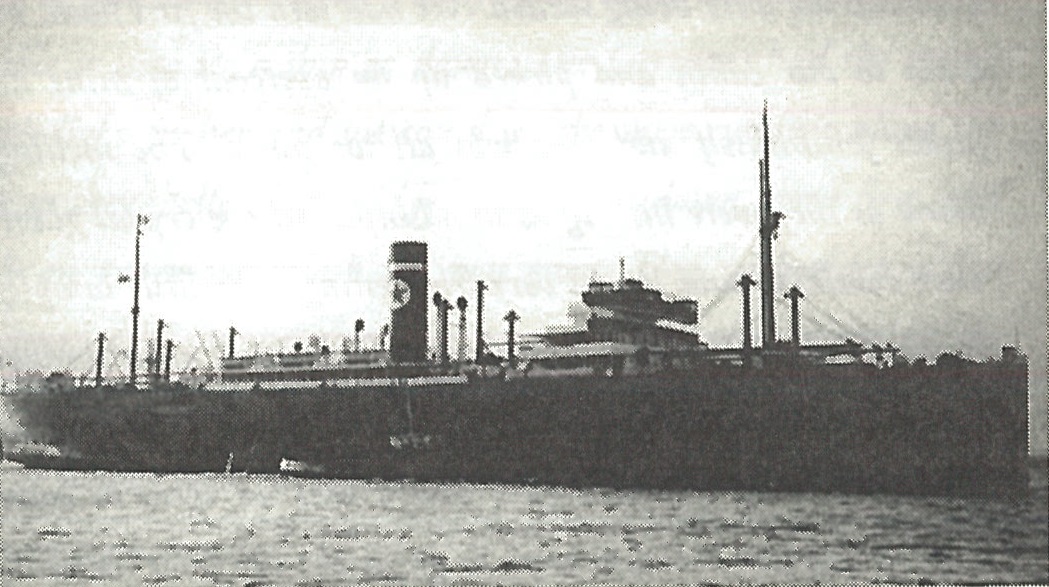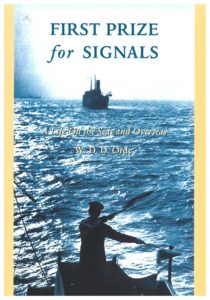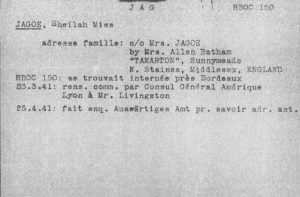Second part of the story A perilous journey across the Atlantic. Find here the first part.
The third passenger on the SS Afric Star was named Sheilagh Jagoe. This is her incredible story.
Sheilagh was born in Argentina to a British family. After studying in England, she returned to Buenos Aires and worked as a secretary in a British hospital. She got engaged, but her mother didn’t approve of the match. She convinced Sheilagh to postpone the wedding and instead spend a year in England with her and Sheilagh’s older sister.
They lived near London and Sheilagh worked in the Bomber Command of the Women’s Auxiliary Air Force. The women in the Bomber Command worked on military bases doing a variety of tasks, such as loading bombs, monitoring air traffic, plotting and map-making.
When the year was up, Sheilagh decided to return to Argentina to marry. On 1 December 1940, she embarked on the cargo vessel M.V. Brittany in Liverpool.
During the voyage, she had a chance meeting with the vessel’s first officer, Donald Orde, and the two fell in love.

Photo of W. D.D. Orde, from his book First prize for signals: A life on the seas and overseas, 2000.
Donald Orde recounted their meeting in his memoir First prize for signals: A life on the seas and overseas.
Sheilagh’s beauty did not go unremarked on board.
Although inclement weather kept Donald busy with his official duties, he had noticed Sheilagh strolling on deck through the storms. An unfortunate accident was what finally brought them together. The first mate, a very charismatic fellow, had an accident on deck and broke his leg. His cabin became the social hub of the boat. Donald was often called to his bedside, because he was in charge of the medical supplies. There he ran into Sheilagh several times. One evening, a few days later, they met again on deck and Donald confessed his feelings, saying that he would have asked her to marry him if she were not already engaged. Sheilagh, enamoured, encouraged him to ask her.
The cargo vessel arrived in Rio de Janeiro and Sheilagh wrote a letter to her fiancé informing him that she intended to marry Donald. Their stop in Rio allowed them to get to know each other better and confirm their decision.
After ten days in Buenos Aires, Donald continued on his way aboard the M.V. Brittany. Sheilagh set off for England a short while later, having finished her preparations, and sure that she and Donald would soon be reunited.
She embarked on the SS Afric Star to start her new life, full of hope like Frank and Joan Evans.
For her too, the attack by the Kormoran came as a shock. Read the full story of the attack in the first part of A perilous journey across the Atlantic.
Many years later, in a letter to her granddaughter, Sheilagh retold the story, adding a number of details. When they were transferred to the German boat, the prisoners were deprived of all their belongings. She and Joan therefore asked the Germans for clothes. They received chintz curtains and chair covers taken from an English boat that the Germans had just seized. They tried to sew clothes from it, but the material wasn’t exactly well adapted to haute couture. They ate only eggs because the English boat had been full of them.
They were transferred to the Nordmark, then the Portland, and were always the only two women on board. They hoped, in vain, to be rescued by the British Navy. When they arrived in Bordeaux, Sheilagh tried to console Joan on the death of her husband, but she too was worried about what was in store for them.
They left France by train with eight other prisoners, arriving first in Bremervörde, then continuing to the Stalag X-B prisoner-of-war camp, near Sandbostel, in north-western Germany. The camp was designed for male prisoners and the women’s presence seemed to complicate things for their German captors. Several guards would escort them to the shower building.
On 19 April 1941, they left Stalag X-B and were transferred from camp to camp (eight in all according to Sheilagh). The living conditions were poor, and they were malnourished. At last, on 12 May 1941, they arrived at Liebenau internment camp near Tettnang, in southern Germany next to Lake Constance. Around 150 women were already there.
Sheilagh says the women tried to live as normally as possible despite being under the constant watch of the German guards, and even organized language classes for one another. She mentioned the care packages from the Red Cross and what a highlight they were for the women.
When Frances, Joan’s daughter, was born, Sheilagh became her godmother.
She was freed in November 1942 in the same prisoner exchange as Joan and Frances, and arrived in England in April 1943. Between Durban, South Africa, and England, her convoy was attacked by German submarines, but luckily the boat she was on was not damaged.
She was at last reunited with Donald and married him three weeks after her return, on 27 April 1943.
Life took Joan and Sheilagh in different directions and they lost touch completely. Sheilagh only occasionally mentioned her traumatic experience on board the SS Afric Star. Her daughter Caroline says that she never got to read Frances Evans’ book, Quiet Endurance.
Donald and Sheilagh had four children and remained a happy couple for the rest of their lives.
A big thank you to Caroline Slack, Sheilagh’s daughter, for sharing this story with us.







Comments